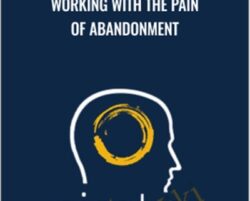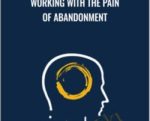Working with Abandonment: 26 Top Experts Share the Latest Strategies to Help Clients HealBeing abandoned hurts. In the moment, it can feel like you can’t breathe and that life is about to end. And then comes the painful sensations that ripple through the body and fill you with paralyzing panic.When this happens to a client, they can become fearful of ever experiencing abandonment again. Problem is, they can then develop harmful coping strategies that not only create more pain, but put them at even greater risk of being rejected.So how do we work with the desperate behavior and hair-trigger nervous system that can make abandonment a self-fulfilling prophecy?We turned to the world’s 26 top experts to hear how they work with clients who have been abandoned. Here are the latest strategies that you can start using in your work today.Working with the Pain of AbandonmentHow to Work with Clients Who Are Hypersensitive to RejectionPeter Levine, PhD Ron Siegel, PsyD Judson Brewer, MD, PhD Melanie Greenberg, PhDThe specific neural pattern that fuels a fear of abandonmentOne way to help clients shift out of a rejection-oriented mindsetHow to work with a client’s panic when being rejectedKey Strategies for Working with Abandonment and TraumaBessel van der Kolk, MD Peter Levine, PhD Kelly McGonigal, PhD Resmaa Menakem, MSW, LICSW, SEP Melanie Greenberg, PhDHow PTSD can lead to powerful brain schemas that invite rejection from othersOne practice to help clients with panic disorder regulate their body when triggered by abandonmentHow trauma-informed neurofeedback can neutralize reactivity to an experience of rejectionHow to Approach Shame That Drives a Fear of RejectionDan Siegel, MDHow the ruminating brain can lock clients into ambivalent relationships that invite shameHow to work with clients whose sense of defectiveness fuels a fear of abandonmentHow to Recondition a Nervous System Damaged by AbandonmentStephen Porges, PhD Deb Dana, LCSWHow abandonment leaves a deep tracing on the nervous system (and what this means for treatment)Why the nervous system will often sabotage offers to co-regulateHow to help a client’s nervous system tolerate ruptures in a relationshipHow to Read the Abandonment Story Your Client’s Body Is TellingPat Ogden, PhD Bonnie Goldstein, PhD Deb Dana, LCSWHow to recognize possible signs of early life abandonment in your client’s bodyHow a client’s physiology can reveal the way they’re managing a fear of abandonmentWays to Change Fearful Behavior That Sets a Client Up for Further AbandonmentPat Ogden, PhD Melanie Greenberg, PhD Ron Siegel, PsyD Donald Meichenbaum, PhD Terry Real, MSW, LICSWTwo specific ways a client’s fear of abandonment can become a self-fulfilling prophecyHow to reframe a client’s neediness to make it an ally in their healingHow to help a client stay regulated when their partner rejects their needsHow to Help Clients Stop Sacrificing Their Boundaries to Avoid Being AbandonedJoan Borysenko, PhD Kelly McGonigal, PhD Ron Siegel, PsyD Judson Brewer, MD, PhD Melanie Greenberg, PhD Pat Ogden, PhDThe addiction model that leads a client to soften their boundaries (and how to change it)The painful reason why some clients will gamble away their principles in a relationshipTwo practical ways to help clients shore up their personal boundariesA 3-Step Strategy to Expand a Client’s Tolerance of RejectionSteven Hayes, PhD Kelly McGonigal, PhDHow to help clients engage their fear of abandonment without getting overwhelmedHow to adjust your treatment of abandonment when the client dissociatesA compassionate strategy to help clients break a paralyzing fear of abandonmentHow to Treat A Fear of Abandonment Linked to BetrayalShelly Harrell, PhD Richard Schwartz, PhD Stan Tatkin, PsyD, MFTOne way to reduce the stigma and humiliation a client attaches to their experience of betrayalThe damaging way clients often approach decisions when they fear lossHere’s What You’ll Get:Everything is yours to keep forever in your professional libraryDownloadable videos so you can watch at your convenience, on any deviceAudio recordings you can download and listen to at home, in the car, at the gym or wherever you likeProfessionally-formatted transcripts of the sessions, to make review and action simpleThree downloadable bonus videos to help you work with a Client’s Pain of AbandonmentWhy the Transcript Is Essential:The transcript makes it easy to go back and double check concepts, citations and names that are mentionedWe put in a table of contents to make it easy for you to find the exact part of the webinar you needHaving the concepts already written allows you to take notes on how you’re going to use the ideas rather than transcribing the ideasSome people simply learn better by reading than by listening or watchingYou will be able to print out and share techniques presented in the session with your patientsGet Working with the Pain of Abandonment – NICABM, Only Price $47Tag: Working with the Pain of Abandonment – NICABM Review. Working with the Pain of Abandonment – NICABM download. Working with the Pain of Abandonment – NICABM discount.
 Remote Work 101 – Camille Attell
₹13,612.00
Remote Work 101 – Camille Attell
₹13,612.00
 Travis Petelle – E-Com Start To Finish Project
₹5,801.70
Travis Petelle – E-Com Start To Finish Project
₹5,801.70
Working with the Pain of Abandonment – NICABM
₹7,138.00




